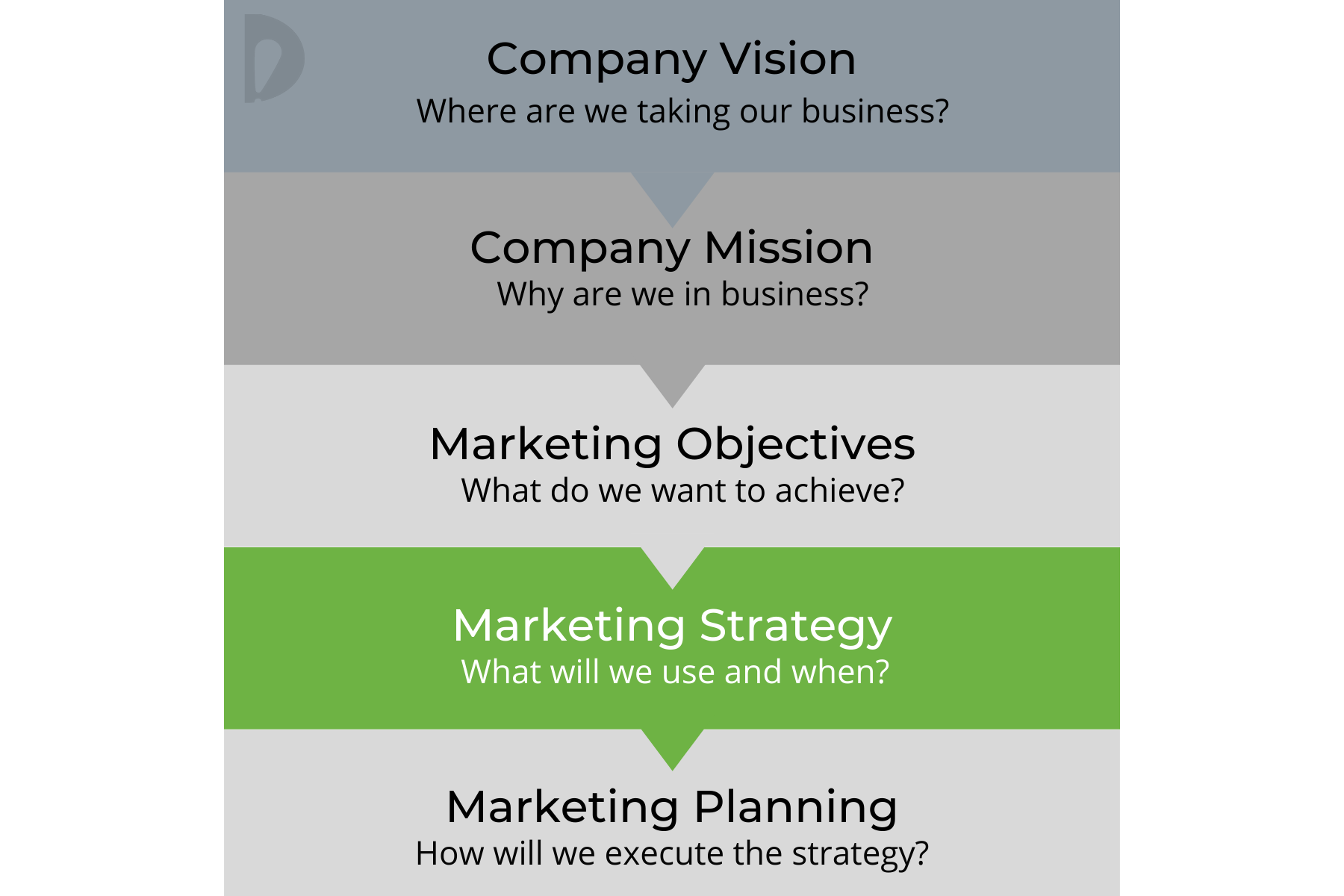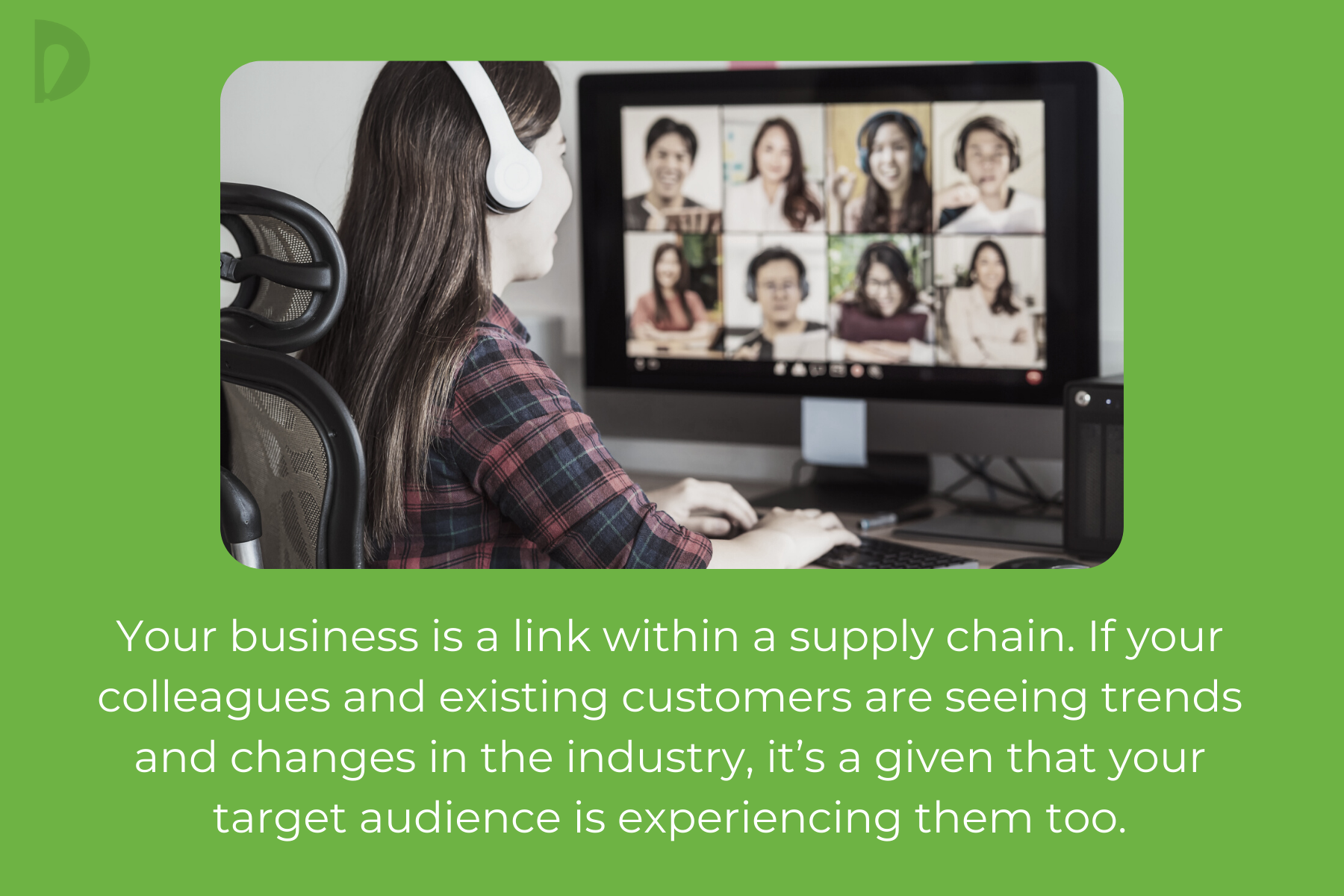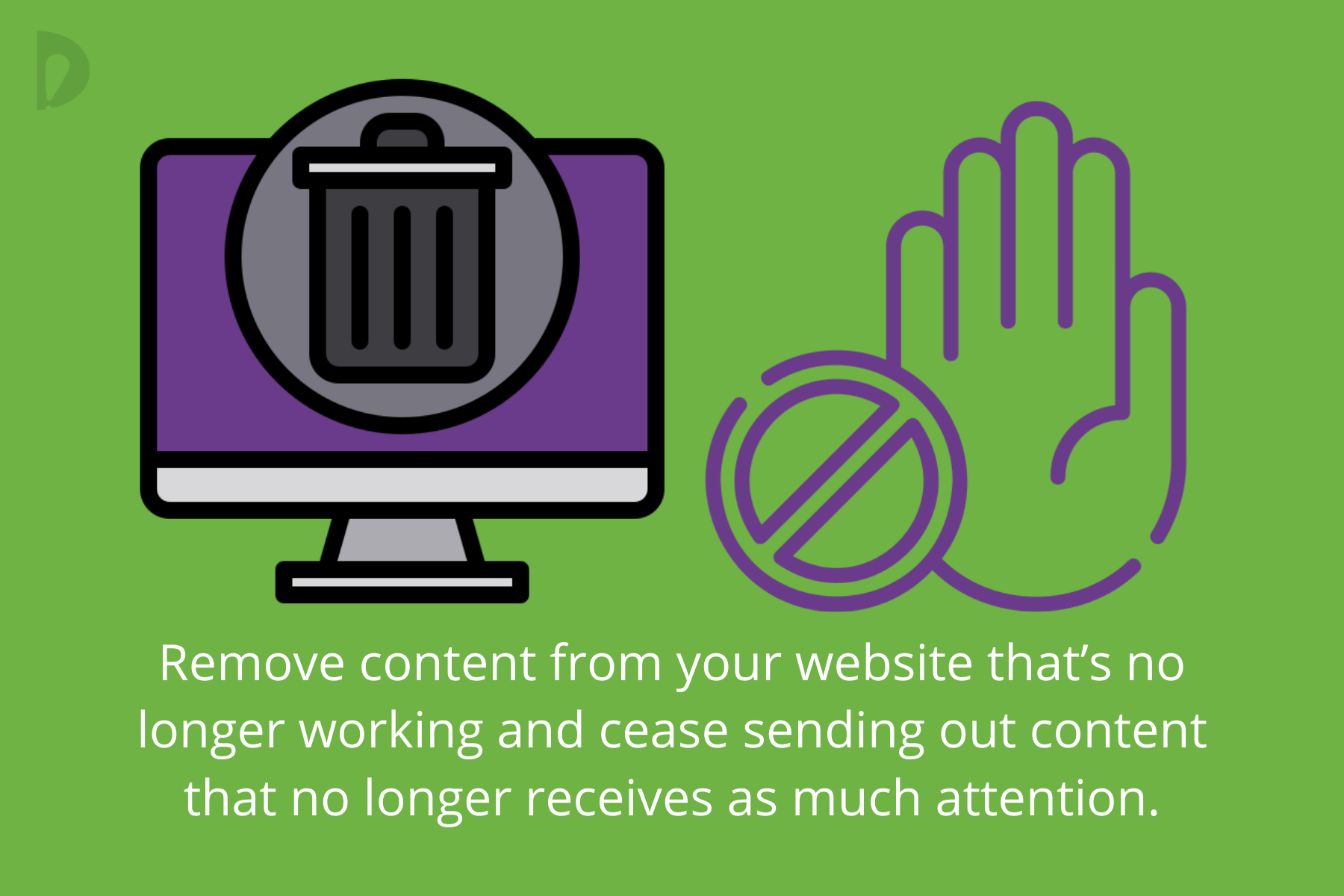Evolving Your Marketing Communications Strategy
To draw your products and services to the attention of new customers, and to grow your business at a fast rate, your marketing communications must both reach and influence your target audience. On this page, and in our downloadable guide, we explain how to evolve your marcoms strategy to ensure you are always sending relevant content to appropriate people through the most effective methods.
TABLE OF CONTENTS
What is Marketing Communications?
Marketing communications or marcoms are the approaches, methods and tactics that a business leverages to effectively communicate with customers and prospective customers both online and offline. The impact of technology, digital and social media platforms has driven a change of focus for companies in every sector, as it has fundamentally changed how people research and buy services, solutions and products in a business to business setting.
The traditional marketing mix has always revolved around the “Four P’s” of Product, Price, Place and Promotion. Marcoms is focused on the promotion element of marketing and the message your business relays to your target market. So this can comprise of anything from your online presence i.e website, your social media presence, press releases in trade magazines, sales promotion, public relations, appearances at trade shows and your direct sales approach.
In short, effective marcoms has two distinct goals:
- Differentiation – To create and sustain a demand and preference for your products, over and above your competitors in the market.
- Shorter Sales Cycle – To reduce the time it takes for a prospective customer to move through your sales pipeline and make a purchasing decision.
Creating a preference for your products is a long-term effort and requires the use of communication tools to position your products or brand in the minds of your target customers or clients. By establishing a preference for your product and building your brand you will bring long term value to the company; value which could reveal itself in terms of market share and profitability. Brand building can also help you grow your talent pool.
Shortening the sales cycle means helping sales to identify, engage with and convert a prospect into a customer. Understanding your customers’ purchasing journeys – and they won’t all be the same – will bring you essential insights into how to shorten the sales cycle.
Evolving Your Marcoms Strategy
Evolution is all about adapting to changing environments and countering new threats.
Evolve to survive is how most businesses operate. Always playing catch up.
Evolve to thrive is how your business will grow.
You will need to be more dynamic than before, more reactive than before and more strategic than before.
Let’s start by putting the word ‘strategy’ into context, as it is often confused with ‘plan’.
- A strategy is outward-looking and formulated against the backdrop of all known aspects of the markets within which your company currently operates and those you aim to enter. As for the unknowns? On the premise that there will always be some unknowns, at the strategic level they are ‘knowns with degrees of certainty or uncertainty’. These range from likely events, such as an existing competitor launching a new product (you knew it was going to happen, you just didn’t know when) to unforeseeable events (such as a global pandemic). To review the success of a given strategy you must measure its effectiveness.
- A plan is inward-looking and formulated against all the materials and resources at your disposal. A plan is how you execute your strategy. To review the success of any given plan you must measure its performance.

Your marketing strategy is the way you meet your marketing objectives, as set by your company’s mission and vision.
Planning is what you do to execute the strategy.
Aligning Key Stakeholders Around Your Strategy
Aim to have a marketing strategy meeting every quarter. Its purpose: a) to review the performance of the plans executed under the strategy set last time and b) to set your strategy for the next three months.
Though responsible for the marketing strategy you cannot evolve it on your own.
You must include many stakeholders in your meeting. For example, if you are responsible for marketing in an advanced engineering company the stakeholders in your meeting should include sales, engineering, operations, production, purchasing and QA. And if your company serves one or more heavily regulated sectors (such as aerospace, automotive or medical, for example) you may need to include industry compliance experts.

For all market sectors you serve, you need to be aware of developments and trends in those markets, upcoming events, legislations being introduced etc. And whilst we said strategies are ‘outward looking’, you do need to be aware of your company’s product roadmap and where you are on it – which is why the various stakeholders are in your meeting.
So, let’s look at what you’ll be reviewing during each and every strategy meeting.
In essence, you are seeking answers to just three core questions:
- Has our target audience changed?
- Is our content still effective?
- Are we communicating as effectively as before?
All three questions are interlinked and must be answered together (ideally with the same people present each time). An analogy here would be a three-legged stool. If just one leg is ineffective it doesn’t matter how effective the other two are, the whole stool is compromised.
Importance of Understanding Buyer Personas
At the heart of effective marcomms is a deep understanding of who you are communicating with, who is your ideal customer profile at a company level and who are the people you need to be in front of within those companies. Remember that this will be constantly evolving and so it is important that you continue to mature your buyer personas over time, create a feedback loop with your sales team and arrange regular meetings to discuss the questions that sales are being asked and who is asking them. Also consider carrying out “persona interviews” with existing clients who fit your persona profile.
At this stage you’re not reviewing what you have done (or are doing) to reach your audience, that comes later.
Much has been written about establishing buyer personas; your ideal customers, based on your understanding of existing customers. But how accurate is that understanding? How often are you aligning (requalifying) those personas with real customers? And how are you doing it?
You need to regularly refresh your understanding of:
- What are your customers’ responsibilities?
- What are their challenges?
- How can their lives be made easier?
- The demographics – e.g., where are your customers geographically, company size etc.?
- The psychographics – e.g., what are their attitudes and preferences?
- How are they interacting with social media?
- What are their latest ‘go to’ sources for information and news?
Establishing the above should be done in the following ways:
- Ask your colleagues. Again, it’s why they’re in the meeting. Between them, your colleagues are interacting with all aspects of your markets, most with ‘selling’ hats on but many with ‘buyer’ hats on too. Are they facing new challenges because of a change in the industry? Have the places they go for information changed?
- Ask your existing customers. Conducted properly (i.e., the right questions), surveys can produce useful information. However, if your content strategy includes case studies [and it should] you clearly need to be asking your customers questions in order to write those stories. The temptation is to focus on just that story. ‘What problem did you have?’ ‘How did we help you?’ ‘Is it working?’ You are missing a trick though if you don’t use your case study interviews to also conduct some general market research and to realign your target audience personas with real people working in the here-and-now.
- Data analysis. How are people interacting with your website and your social media presence, and how are they responding to your communications? Existing customer behaviour is important too. It includes frequency of purchase, most recent purchase and sale value. That data paired with the profit you make on the types of product sold will help steer your strategy; e.g., question how much marketing budget should be spent on low profit margin products.
Note: despite the undeniable importance of ‘digital’ these days, we did not put data analysis first on the above list. This is because the data (numbers, statistics…) needs to be analysed in the context of real people, if it is to be of true value.

Effective Content to Engage Your Audience
Effective content will connect and engage your personas, it will educate them as they move along their buying journey and it will position your business as the thought-leader building trust and authority in the market place. Focus your content on answering the questions that your audience is asking and then develop this into multiple formats such as blog posts, videos, infographics and articles.
What you need to know at the strategic level is: do we need to revise existing content and/or add new content? Knowing when and why to ditch old content is crucial too; i.e., why clutter your site with content that few if any people are reading and why send out (communicate) content that no one wants to hear about anymore?
Whether for inbound or outbound marketing, ‘Content is King’. Indeed, many companies have dedicated content strategies, which is fine so long as it’s part of an overall marketing strategy and not in a silo of its own.
Content takes the form of news, blogs, articles, videos, infographics, advertisements, product brochures, datasheets, your webpages, directory listings etc. For each you must:
- Target it correctly – i.e., written with the appropriate buyer persona in mind and use the correct terminology and phrases;
- Keep the focus on benefits;
- Ensure it is of genuine value – i.e., offers advice and guidance;
- Has a call to action; and
- (importantly) make sure it is free of typos, grammatically correct and that all links work.
The above points are particularly true for content for inbound marketing. Customers generally know what they want (a solution to a problem), so the key is to make sure you can be found when they go looking.
There’s another great reason for getting your inbound marketing content right. Like you, your competitors will be doing their outbound marketing. However, customers in advanced engineering sectors typically research before buying. For example, to justify their selection of a given component or tool, and subject to its value, design engineers must demonstrate they have considered other options.
Granted, that works both ways i.e., some of your outbound marketing might be sending business to your competitors. However, by understanding your target audience, understanding their selection/buying processes, having the right content on your website (to aid informed decisions to be taken) and having a resounding value proposition you can: a) draw in leads as a result of competitors’ outbound content and b) keep more and better qualified leads in your sales funnel.

So how do you know if your content is or isn’t working?
Your web traffic analysis data will show which content is being viewed. That which isn’t needs to be revised or, more likely, removed. For example, is there any reason to carry news that’s more than three years old? Either delete it or, if it pertains to something really important, condense it down to a line or two and add it to your online corporate history/backgrounder.
Also, what journey are visitors taking through your site? What are visitors searching for but not finding? Who is leaving comments against your blogs? What are they saying?
As for your social media, who is interacting and what are they saying? And if you hold online webinars or present at digital seminars, what questions are being asked of your presenters?
In the bigger scheme of things, does your content (as a body of marketing collateral) convey trust? Does it portray you as a helpful voice-of-authority? And just what is the user experience for anyone visiting any of your webpages, watching a video or reading any of your social media posts?
“Are we communicating as effectively as before?”
As stressed in the previous two sections, you must know your audience and your content needs to help them and support their journey as a buyer. Communications are needed to reach new customers and to keep existing ones informed; and loyal.
Customers (and particularly engineers) are selective when it comes to news. They have preferred sources and filter what is presented to them. Customers also filter out advertising when they see it. For example, in the past, a full-page advert in a magazine worked wonders.
Nowadays, an article that offers guidance (and portrays you as a voice of authority) or an engaging case study alongside a small benefits-led advert (print or digital), that ties in with the article or case study, is more effective. This may mean tweaking your adverts more often, but that should be part of your marketing strategy anyway.
Need help with content creation?
If you have a campaign in the pipeline that will require fresh or repurposed content, check out our Marcom Accelerator programme.
Alternatively, get in touch via declare@declaration.co.uk or give us a call on +44 (0)1522 789000, to discuss any requirements you may have for content.
Also, networking is becoming an increasingly important marketing tool (and an expanding subset of communications).
Above, we mentioned social media and recommended you monitor interactions and feedback. But that’s a two-way street. How are you and your colleagues interacting with your markets?
To only post content and expect a flood of likes and comments is akin to going into a room full of people having conversations and shouting out “listen to me, listen to me.”
Leveraging Marketing Communications Tools
- Direct Marketing – this can still be effective if delivered to the right target market. They can include lots of information and are cost-effective compared to online advertising. They can help to build leads within a localised market.
- Email Marketing – email is a powerful marketing communication channel – they are an instantaneous form of communication and can be a cost-effective way to spread awareness. Email newsletters are a powerful way to nurture leads, by providing recipients with targeted messages. This helps to push them further down the sales funnel and keeps them engaged with your brand.
- Advertisements – whether online or in print are an effective way to reach a large audience in the shortest time frame. They are useful in creating brand awareness and help to increase consumption among current buyers.
- Social Media – as discussed above, a positive ‘word of mouth’ can generate organic growth. Social media is a personal ‘one-to-one’ marcomms channel (as are online marketing, personalised microsites and email marketing). Social media is a good place for providing your potential customers with information about your products and values. It’s a way for prospects to find ‘social proof’ about your brand as they’re researching – and an opportunity for you to establish your company’s ‘human’ face.
- Exhibitions – trade shows are opportunities for your prospects to meet with your brand. Trade shows, seminars and webinars are excellent tools for addressing issues, generating leads and introducing new products. They provide a personable experience for potential customers and they offer you an opportunity to establish your brand as a thought-leader within your industry.
- Press Releases – can help elevate awareness of your brand and represent your company in the best light. PRs are mass communication tools that help to spread the word about your products to a wider audience.
Whichever marketing communications channels you decide to use, what’s important is that they are integrated and are used simultaneously to promote your products effectively.
Marketing Communication Metrics to Measure
- Website visits – It is essential to gather information on how many people are visiting your website and how they are engaging with the content. A tool such as google analytics can enable you to report on these metrics. Understanding the sources of this traffic can be key to identifying what is working in your campaign or strategy.
- Email Metrics – The key metric with emails will be your open rates and testing of email subject lines and content should be geared towards increasing open rates. Don’t forget to also measure clicks on links within emails, as this will be a good indicator of how effective your copy is.
- Content Engagement – Focus on how your audience is engaging with your key content, such as landing pages, blog posts, videos and guides. Identifying your top blog posts by views and leads generated can steer your content strategy going forward as well as showing what your audience is getting value from.
- Social Media – Focus on measuring which platforms are generating organic website traffic and converting into leads. As with your website content you should measure which are the most engaged social posts to steer your social media strategy. The posts that generate the most link clicks will show you where to focus your efforts.
- Conversion Metrics – Conversion metrics are key to measuring your return on investment so these include website conversion of visitors into leads, offer conversion of downloads of your offers and sales conversion of leads into customers, something your sales team should be focused on but marcomms can enable and support.
Setting the right metrics is essential when it comes to marketing communications and getting these metrics based on hard data for reporting will allow all stakeholders to run meaningful reports showing tangible results. Remember that more isn’t always better and try to keep focused on the metrics that matter to your business.
In summary
Evolving your marketing communications strategy is essential to not only business survival but also growth. The formulation of the strategy, whilst a marketing responsibility, requires the involvement of a variety of stakeholders.
Collectively you have a clear understanding of the trends, developments, threats and opportunities within the markets you serve; and that’s a great place to start when revising a strategy.

